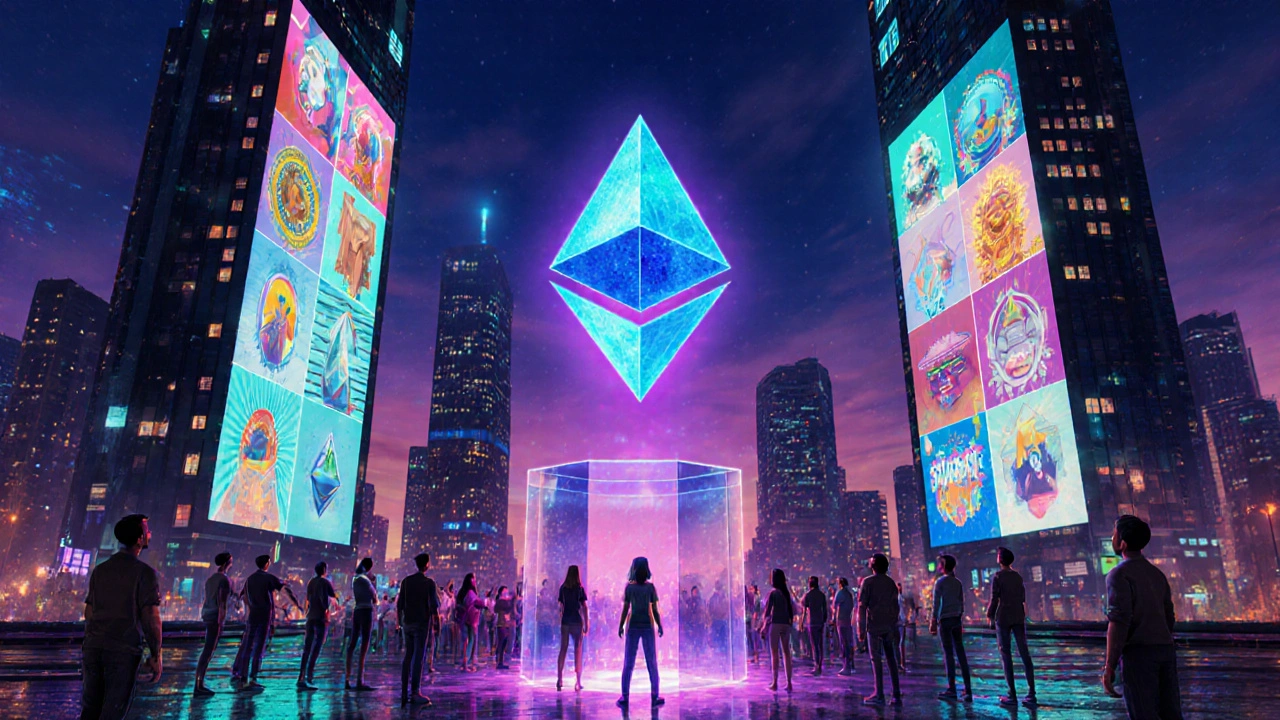NFT Marketplace Guide: Your Essential Roadmap to Digital Collectibles
When you hear NFT marketplace, a digital platform where unique digital assets like art, music, or virtual items are bought and sold using blockchain technology. Also known as digital collectible platform, it's where ownership of one-of-a-kind items is verified and secured on the blockchain. Unlike regular online stores, these marketplaces use smart contracts to handle transactions automatically, so you don’t need a middleman to confirm sales. This might sound technical, but it’s actually simpler than you think—think of it like a digital auction house where every item has a unique digital certificate of authenticity.
At the core of any NFT marketplace is blockchain, a decentralized digital ledger that records transactions across many computers so that the record cannot be altered retroactively. This technology ensures transparency and security for all transactions. For example, when you buy a digital artwork as an NFT, the blockchain records your ownership permanently, making it impossible to fake or duplicate. It’s the backbone that makes NFTs trustworthy and verifiable. Without blockchain, NFTs wouldn’t exist—they’d just be regular digital files anyone could copy. But because they’re tied to a blockchain, each NFT is unique and trackable, which is why people pay real money for them.
Another key concept is smart contracts, self-executing code on the blockchain that automatically enforces the terms of a transaction. These contracts handle everything from payments to ownership transfers without human intervention. For instance, when you purchase an NFT, the smart contract ensures the seller gets paid and you receive the NFT instantly. It’s like having a robot notary that works 24/7, making transactions fast and secure. This automation is why NFT marketplaces can operate efficiently—no paperwork, no delays. Plus, creators can program royalties into the smart contract, so they earn a percentage every time their NFT is resold. That’s a game-changer for artists and creators who want ongoing income from their work.
But what if you want to move your NFT between different blockchains? That’s where token bridging, a process that allows assets to move between separate blockchain networks. For example, if you have an NFT on Ethereum but want to use it on a cheaper blockchain like Polygon, a bridge connects the two networks. This is especially useful for reducing transaction fees and speeding up transfers, which is why many NFT marketplaces support multiple chains. You’ll find detailed guides on how to bridge tokens safely in our collection—like the step-by-step guide in 'How to Bridge Tokens Between Blockchains', which walks you through the process without technical jargon.
Sidechains also play a big role in NFT marketplaces. sidechains, separate blockchains that connect to the main chain to improve scalability and reduce costs. They allow NFT marketplaces to handle more transactions without slowing down the main network. For instance, a sidechain might handle all the NFT trades for a specific marketplace, keeping the main blockchain free for other critical transactions. The post 'How Sidechains Work in Blockchain' breaks down what they are and when to use them, making complex tech easy to understand.
Now, how does this all connect to fashion and lifestyle? In the world of urban chic, digital fashion NFTs are becoming a key part of modern style—allowing you to own unique virtual outfits that can be worn in online spaces or even linked to physical pieces. Imagine buying a digital designer jacket as an NFT, then wearing it in a virtual event or showing it off in your social media profile. This blend of real-world style and digital ownership is where NFT marketplaces are making their mark, especially for those who value sustainability and innovation in their fashion choices.
Our collection of posts covers everything from the basics of blockchain to practical steps for using NFT marketplaces. You’ll find guides on token bridging, sidechains, and how to safely trade digital assets—all written in plain language with real-world examples. Whether you’re a beginner or looking to deepen your knowledge, these posts give you the tools to navigate the NFT space with confidence.
Below you’ll find a curated selection of articles designed to help you understand and use NFT marketplaces effectively. From step-by-step guides to clear explanations of key concepts, there’s something here for everyone ready to explore the world of digital collectibles. Whether you're new to blockchain or looking to deepen your knowledge, our posts break down complex topics into easy-to-follow steps.
How to Buy NFT with Ethereum: A Step‑by‑Step Guide
Posted by Lauren DeCorte on Oct, 18 2025

A practical step‑by‑step guide showing how to set up a wallet, get ETH, choose a marketplace, and safely complete an NFT purchase on Ethereum.
